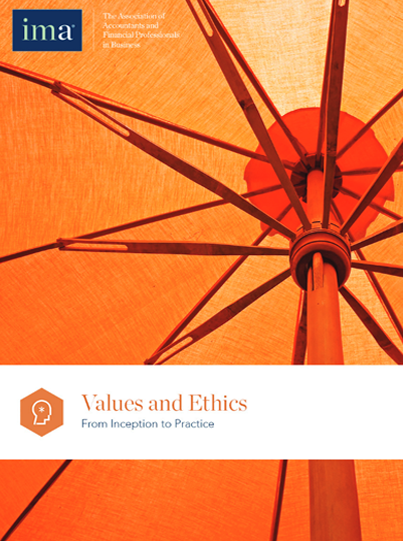
While ethics is not a new concept in business, ithas gained importance and visibility recently asa result of public- and private-sector disclosureand reporting issues and the passage of TheSarbanes-Oxley Act (SOX). The lessons learnedfrom Enron and the other accounting scandalsshow that the development of an ethics policydoes not automatically lead to an ethical organi-zation any more than developing a corporateVision creates a visionary organization (Collins,2001)
Ethical behavior is not about abiding by the law.Individuals and organizations can act legally andstill be acting unethically. Ethical behavior is driv-enby compliance with a set of values that actsas the touchstone for situational decisionswhere rules may not exist to cover every alterna-tive. Ethics is about the integrity of the decision-making process that is used to resolve any num-ber of issues.Rushworth Kidder, president of the Institute forGlobal Ethics, explains the link between the driv-ing values of an organization and the behaviorsthat result: “Ethics,in its broader sense,dealswith human conduct in relation to what is moral-ly good and bad, right and wrong. It is the appli-cation of values to decision making. These val-ues include honesty, fairness, responsibility,respect,and compassion.” In its Statement ofEthical Professional Practice, IMA outlines theoverarching principles that drive ethical behavior.Members of the organization are expected toabide by the Statement and engage these princi-ples—both at their jobs and in life itself—even ifit costs them financially,just as members ofother professional organizations are expected toabide by their group’s respective code of ethics,such as the American Institute of Certified PublicAccountants’ (AICPA) “Code of ProfessionalConduct.”Establishing a code of conduct in smaller, pri-vately owned organizations is usually fairlystraightforward: The owner “leads by example.”His or her demonstrated behavior becomes themodel for other employees—even if it is neverdocumented—and creates the organizational“culture.” Challenges arise when these organiza-tions grow and employees become disconnectedfrom direct day-to-day contact with the owner.
In larger organizations, the problem is magnified.If no defined code of conduct and ethical behav-ior is developed, employees will act on their ownbeliefs and values, or they will observe and emu-late the behavior they see around them on adaily basis. If the kinds of scandals that plagued the busi-ness world in the late 20thand early 21stCentury are to be avoided, organizational behav-ior needs to be defined and deployed in a waythat drives the individual behavior of employeesin a manner consistent with defined expecta-tions of the wider organization. Many individualsat the center of corporate scandals have pro-fessed the belief that they were innocent of anywrongdoing, including Kenneth Lay of Enron orConrad Black of Hollinger. The problem is thatthese individuals did not define their behavior bywhat most of society would see as “reasonable,”but rather they followed their own particularcode—in some cases,limiting the definition ofethical behavior to require compliance with thelaw and nothing more. When laws may have beenbroken,it falls to the courts to decide if an actwas illegal and to assess penalties. In situationsthat may be unethical but are not illegal, howev-er, there is no legal remedy. The only course ofaction for society is to either pressure the gov-ernment to enact more rules or to decide not todo business or develop relationships with uneth-ical companies and individuals. This is how SOXcame about,and it is how an organization canlose the value of its brand.